Abstract
OBJECTIVE: Using recent data, to analyze the generic drug entry phenomenon to determine the factors that influence the speed and likelihood of generic drug entries. DATA SOURCES: Data for 81 drugs that have lost patent between 1987 and 1994. Patent and exclusive marketing rights expiration dates: Food and Drug Administration's (FDA) Approved Drug Products with Therapeutic Equivalent Evaluations (1986-1989). Generic entry dates: FDA Drug and Device Product Approvals (Jan. 1987-Dec. 1994). Numbers of pending generic applications: FDA Office of Generic Drugs Quantitative Report-ANDAs and AADAs (Nov. 1990-Jan. 1993). Sales revenue: Pharmaceutical Data Services, Walsh-America. STUDY DESIGN: This study appropriately recognizes generic entry as a survival problem, and uses a proportional hazard method for analysis. PRINCIPAL FINDINGS: (1) There is a negative relationship between an innovative drug's sales revenue and the time to generic entry. (2) Entries of generics tend to be slower for drugs that have either very few or a very large number of competing brands in the marketplace. (3) The time to generic entry increased overall between 1987 and 1994. (4) Drugs that primarily treat chronic symptoms tend to enter faster than the types of drugs that primarily treat acute illnesses. CONCLUSIONS: The analysis shows that the generic industry is targeting large-revenue products and chronic drug markets. Entry of a generic drug is influenced by the existing branded substitutes in the marketplace. Surprisingly, the generic drug entry process has slowed despite many changes that would facilitate entry.
Full text
PDF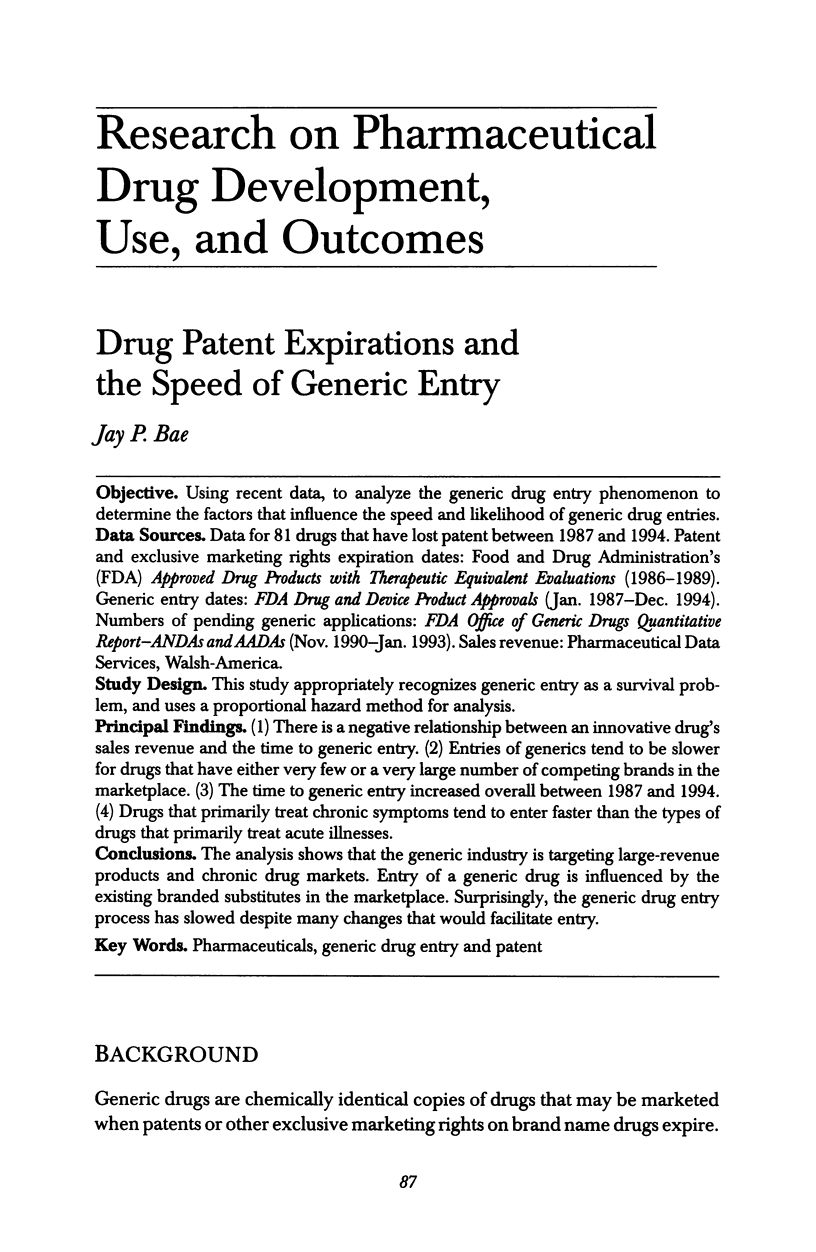
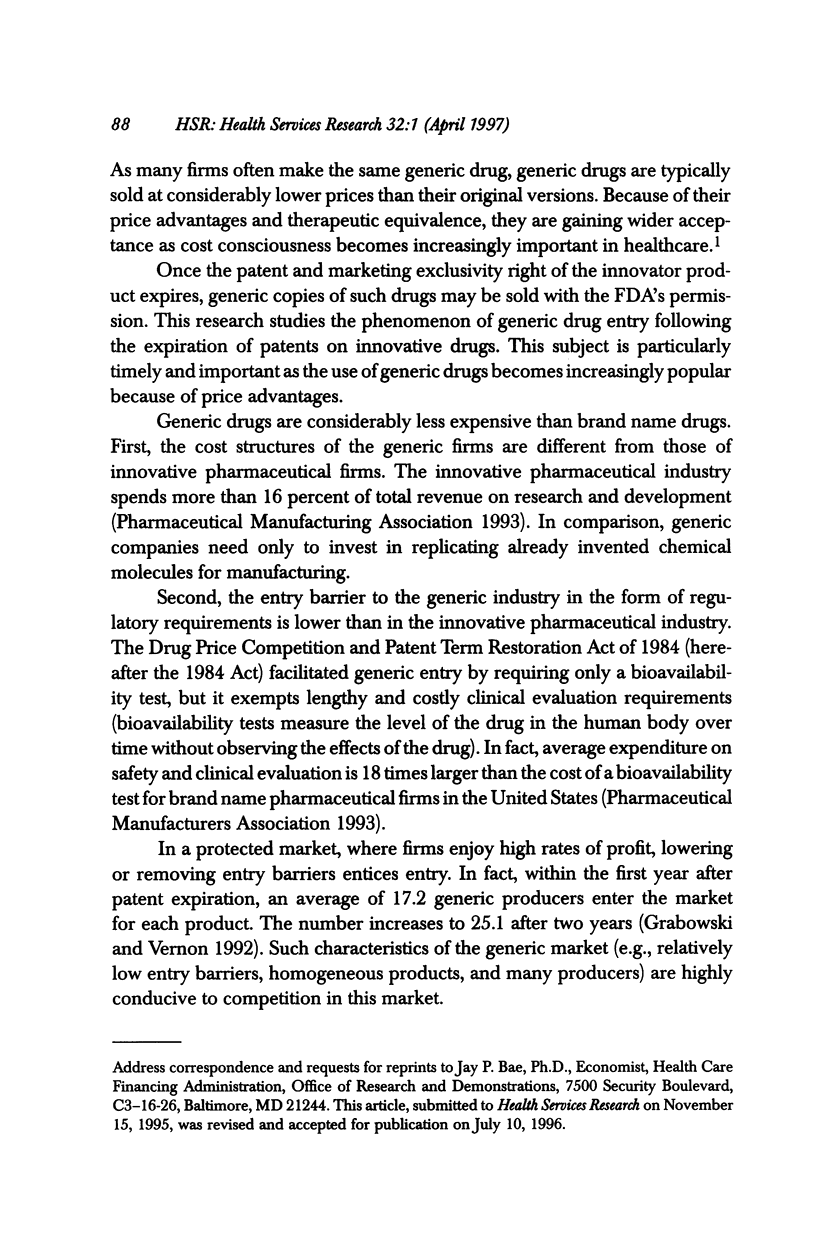
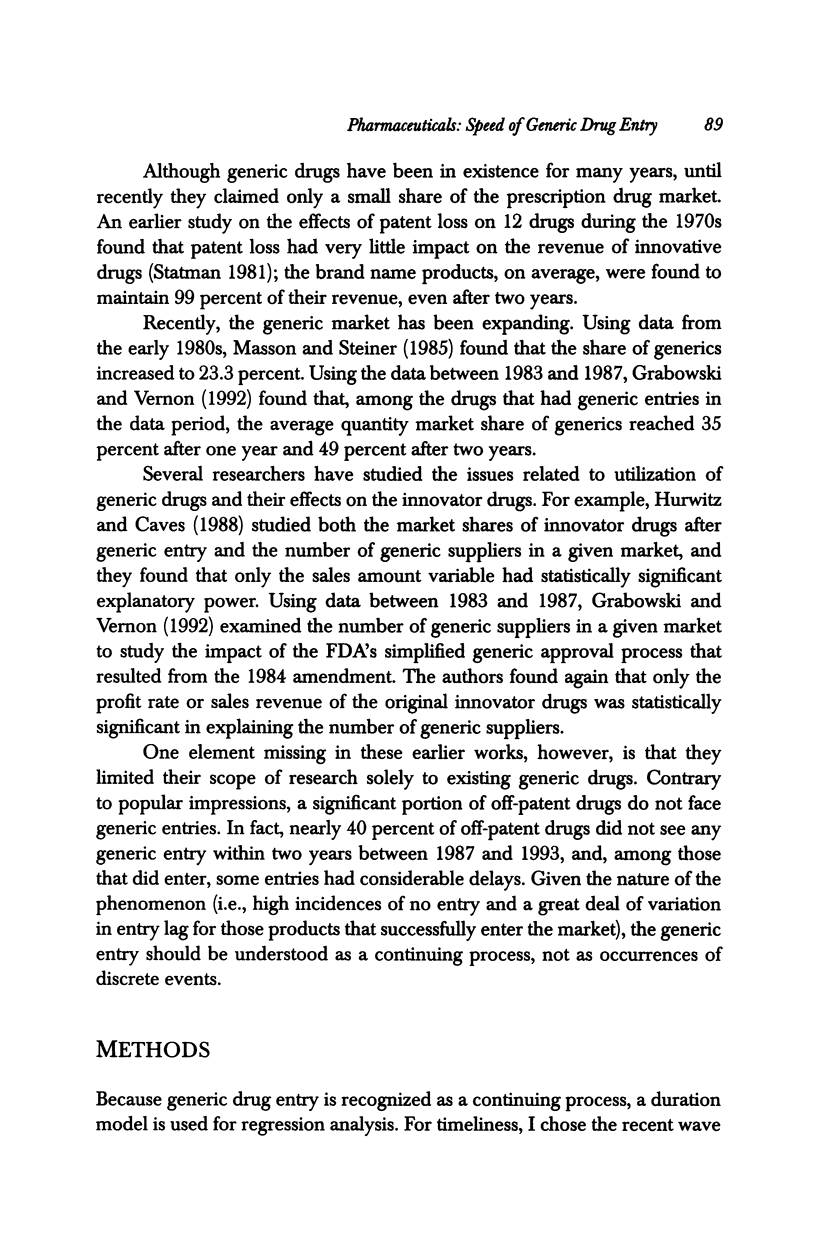
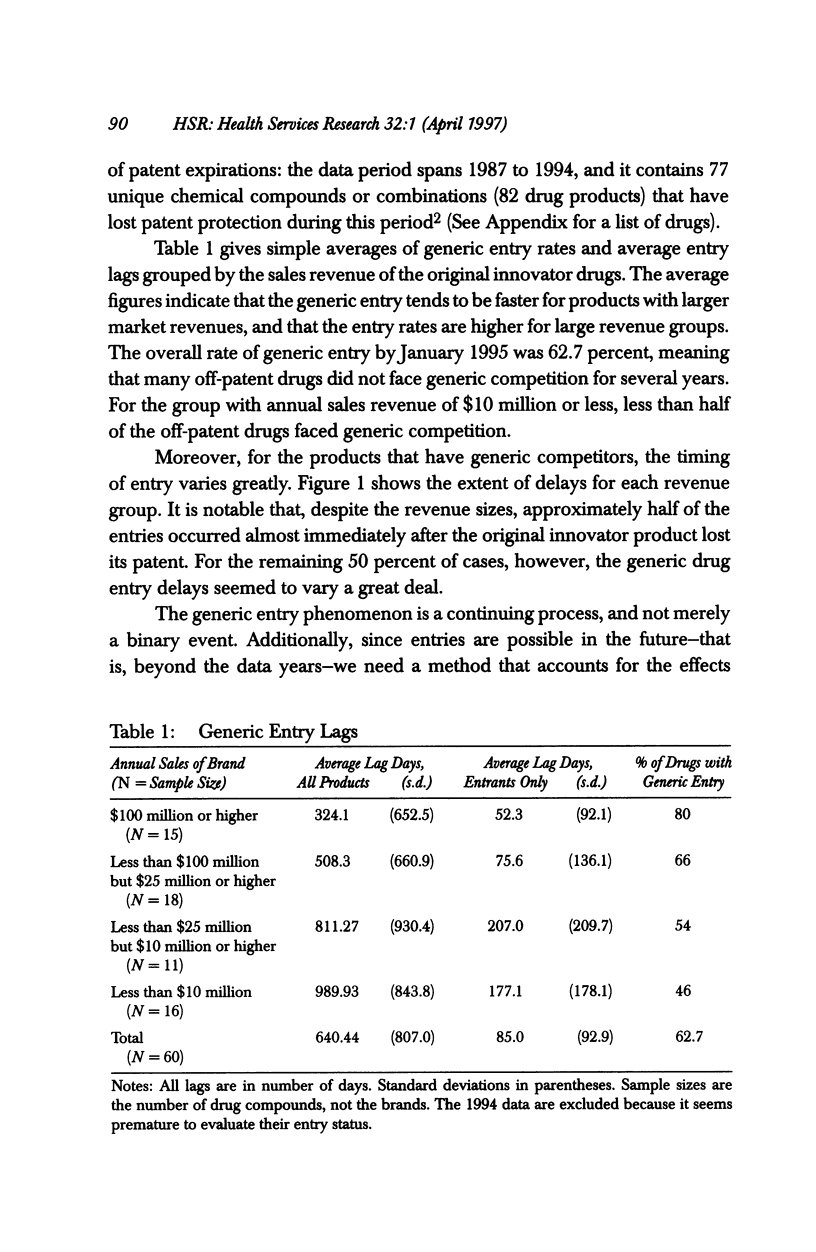
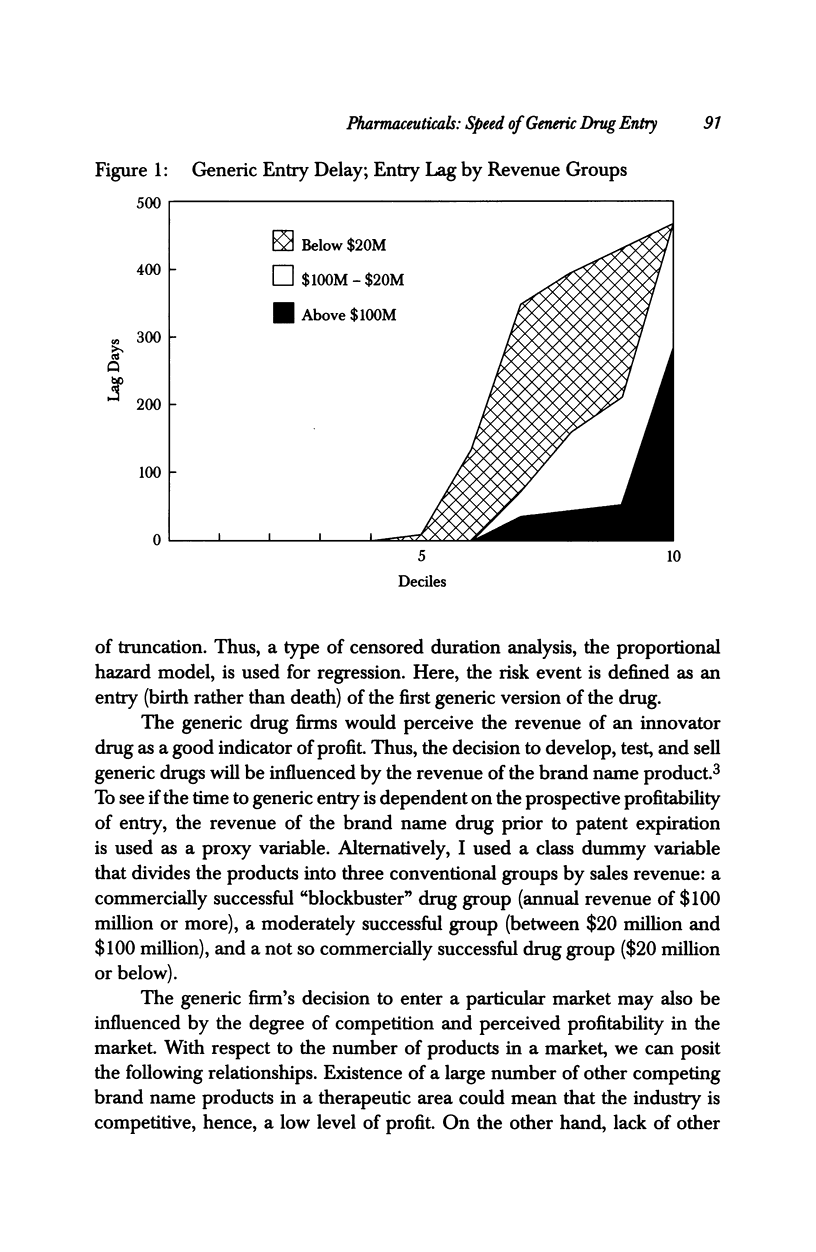
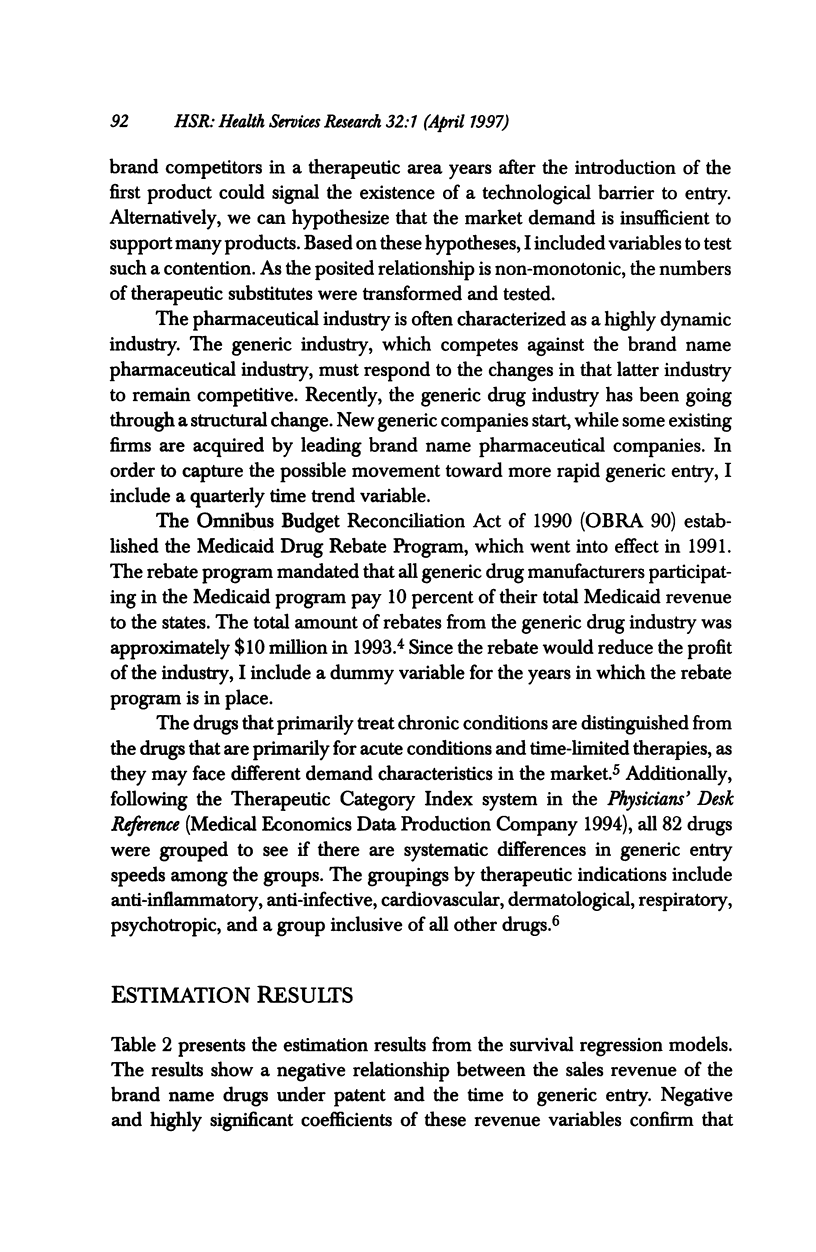
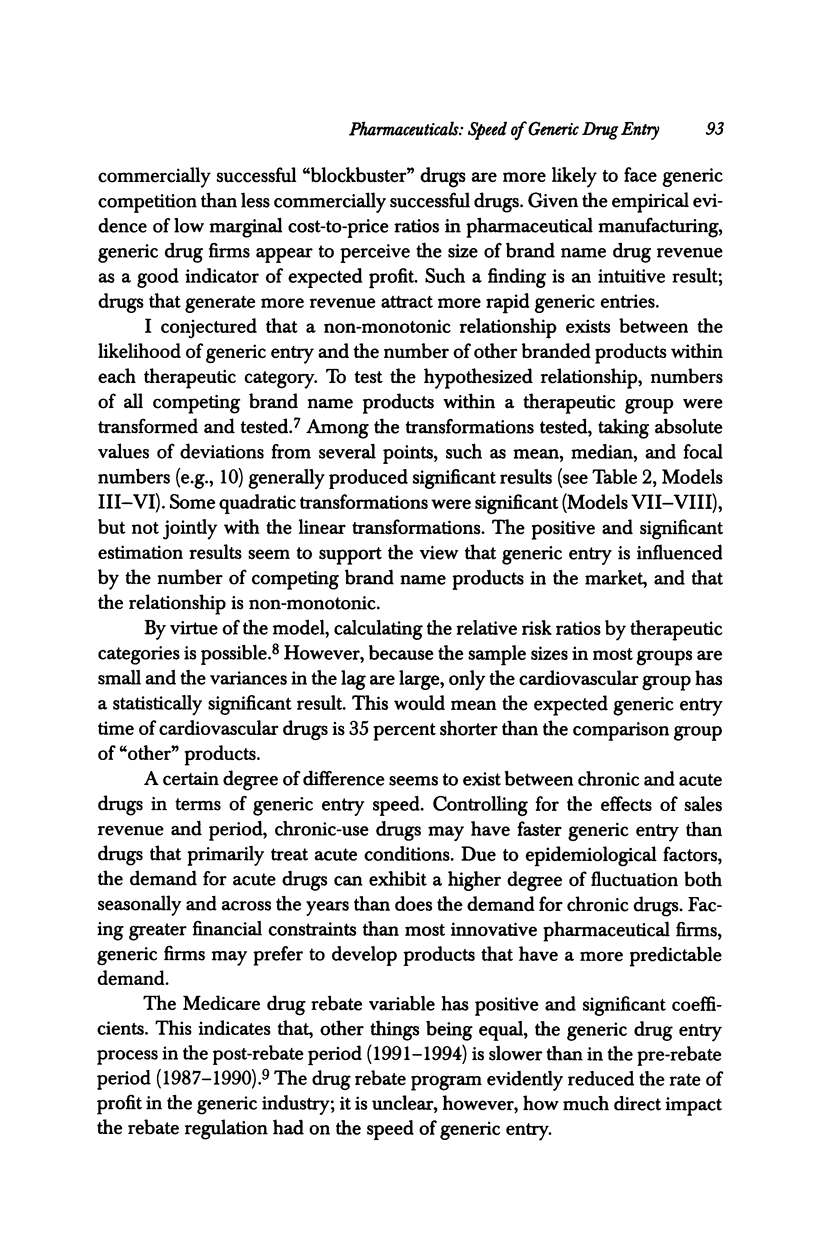
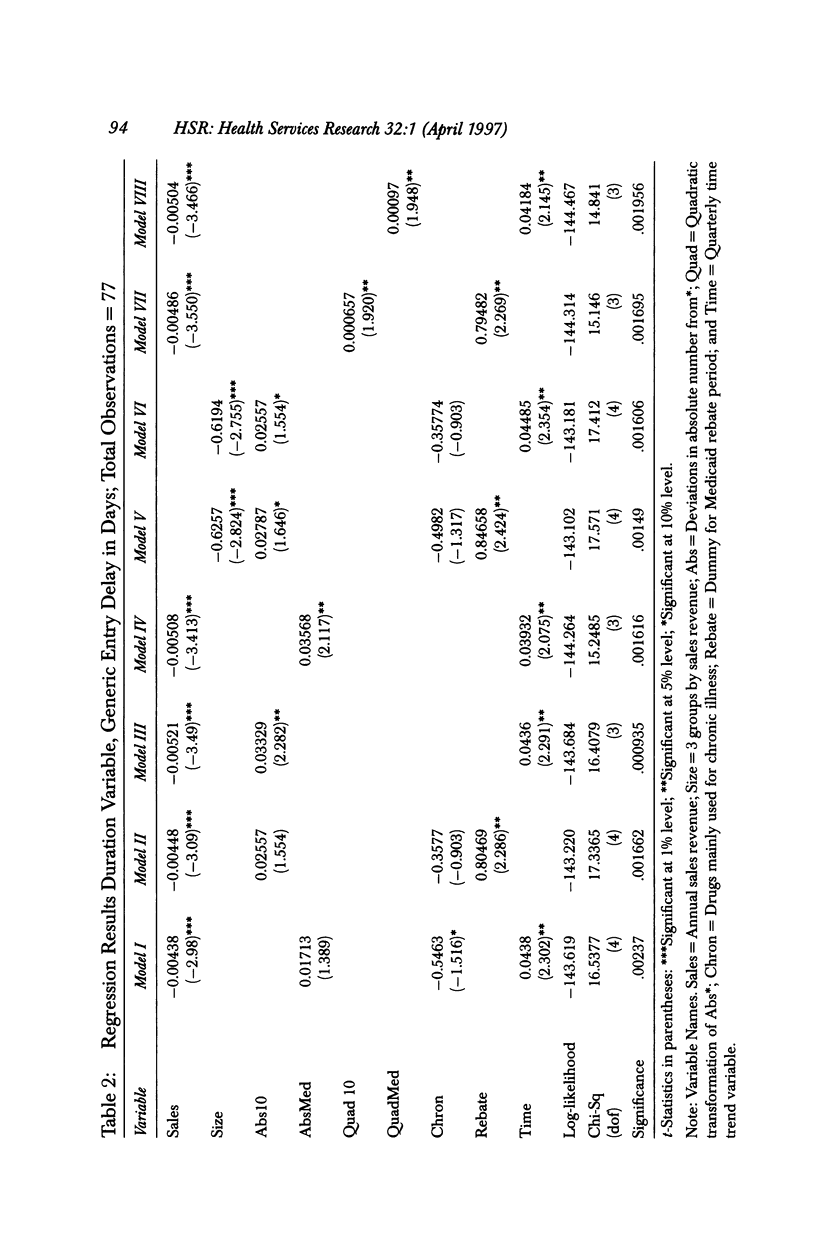
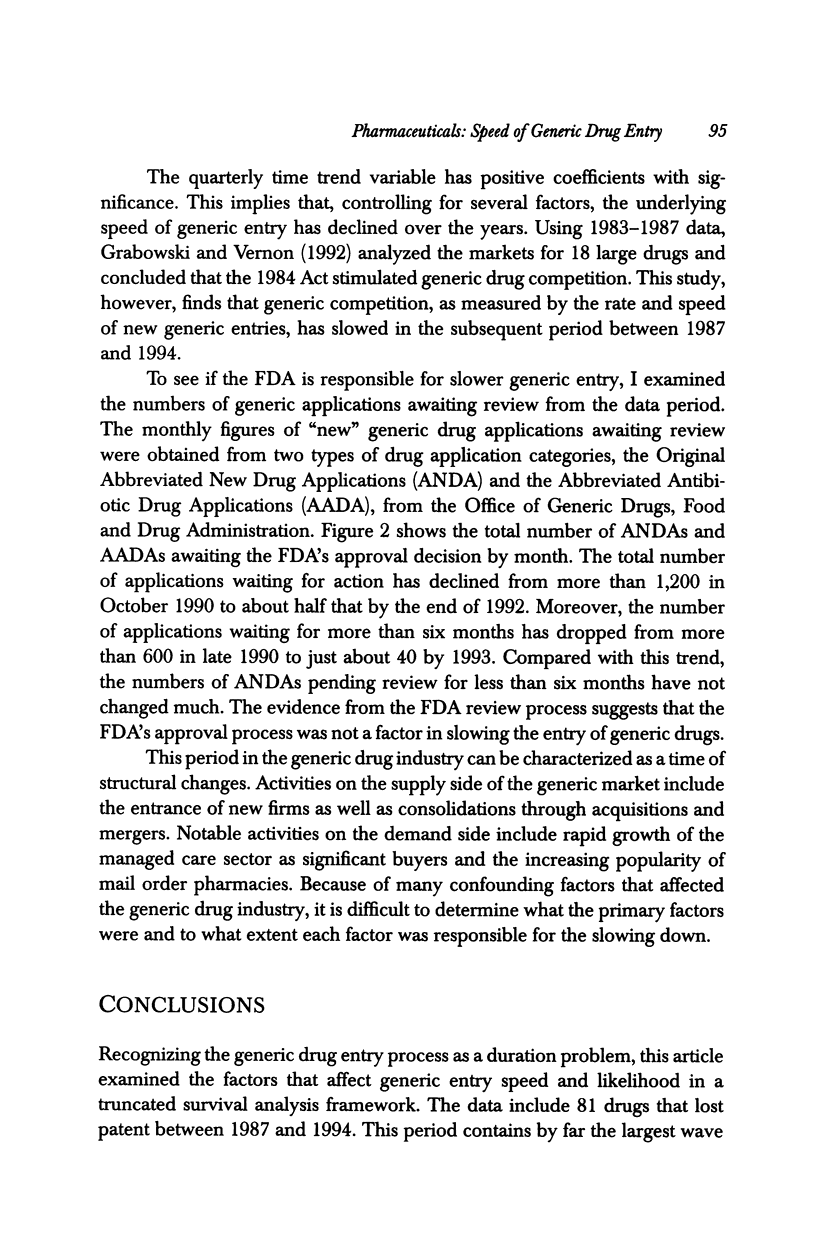
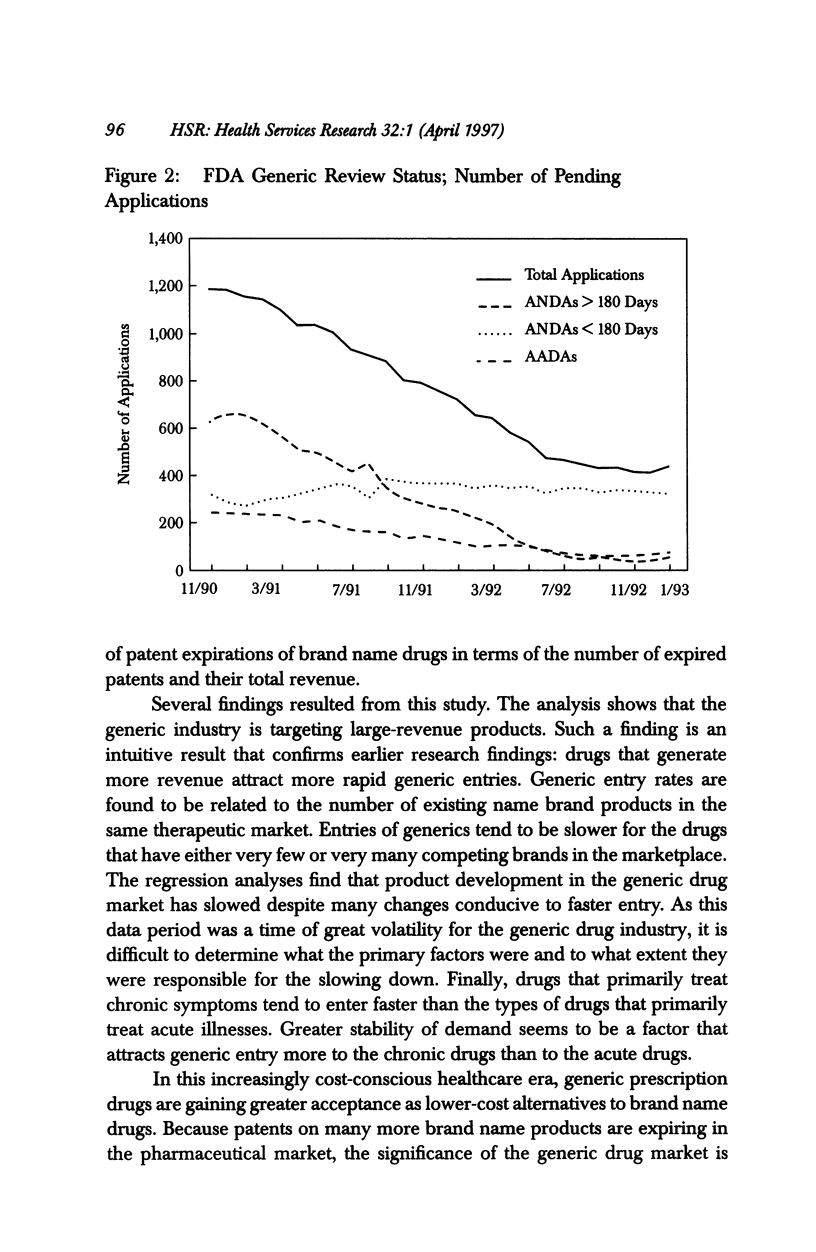
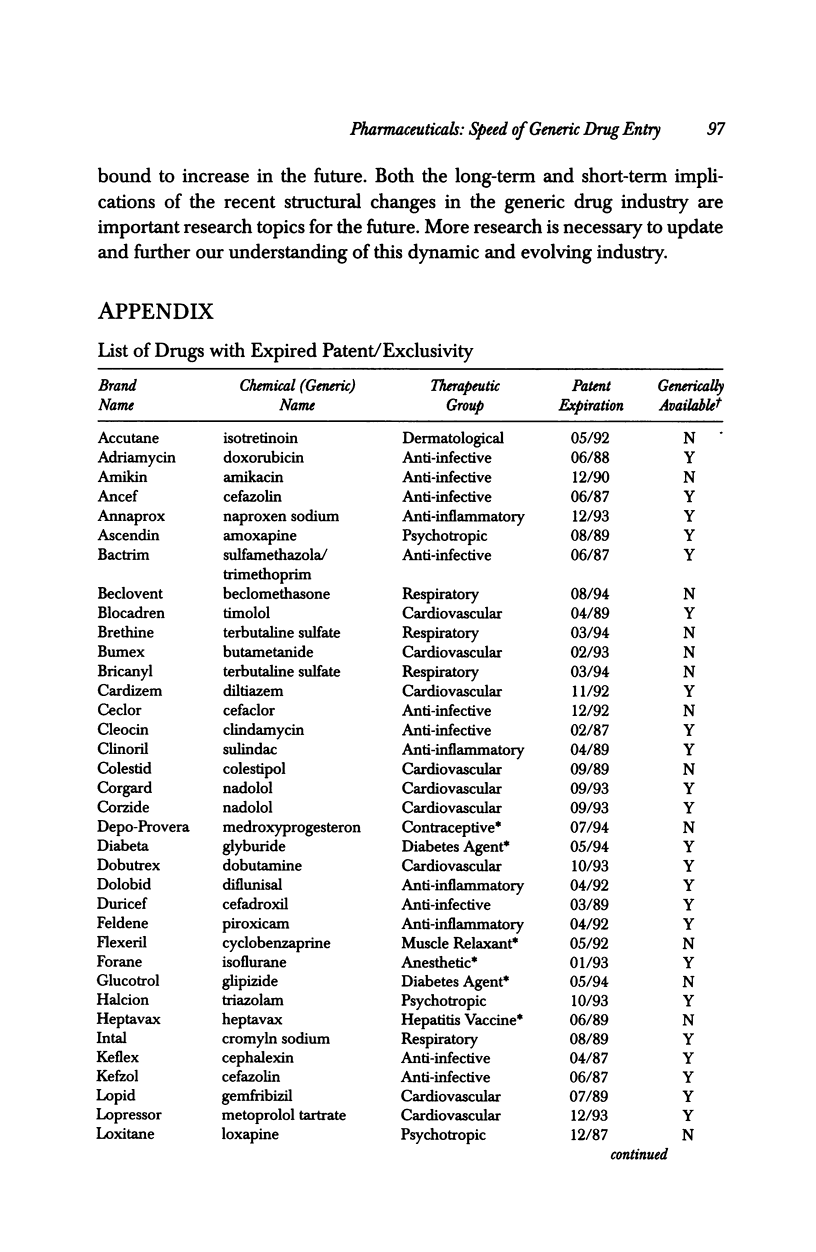
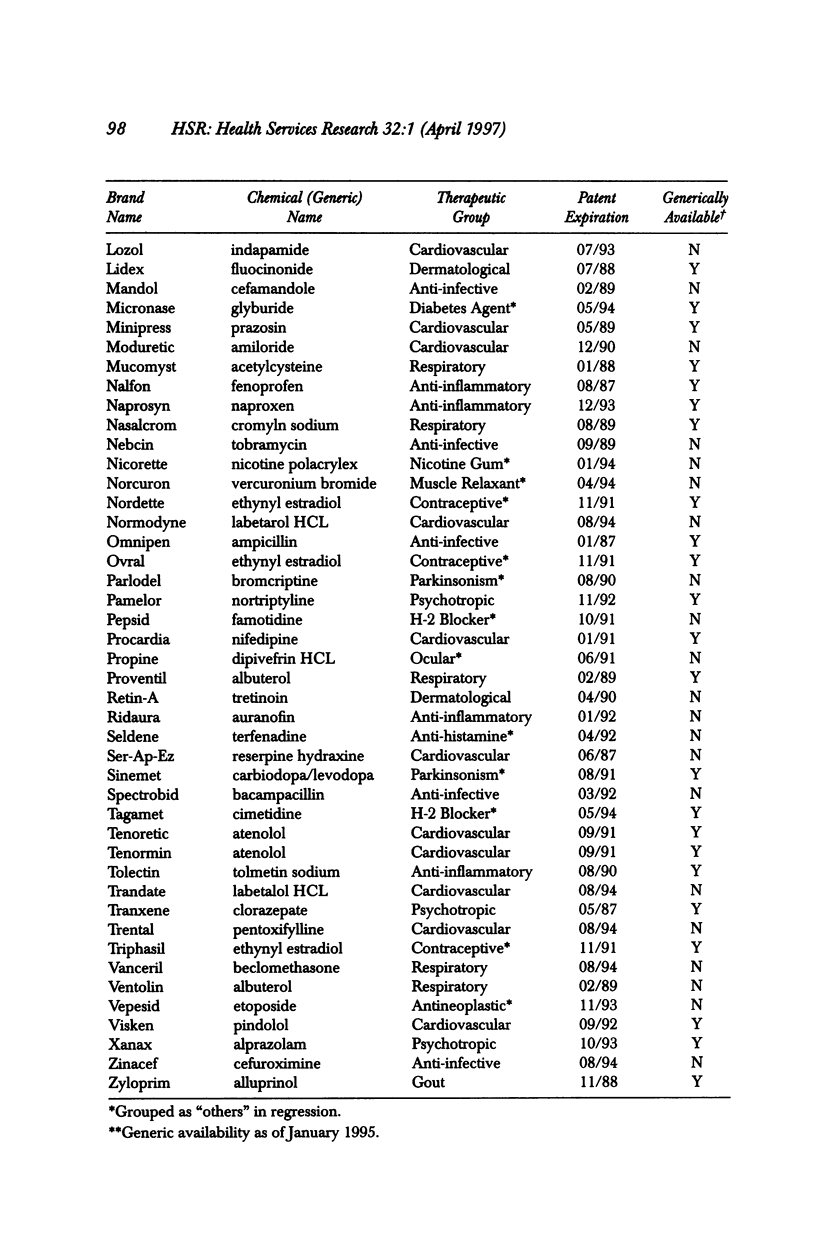
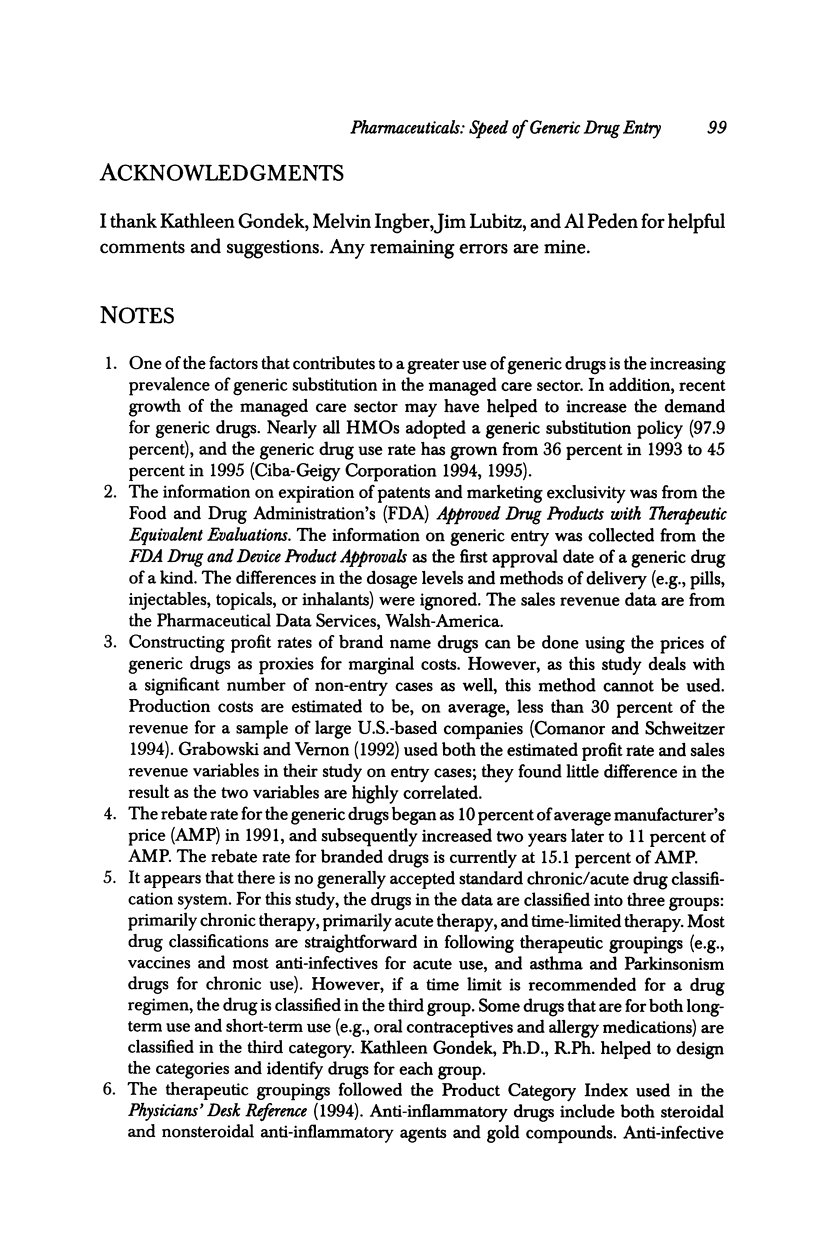
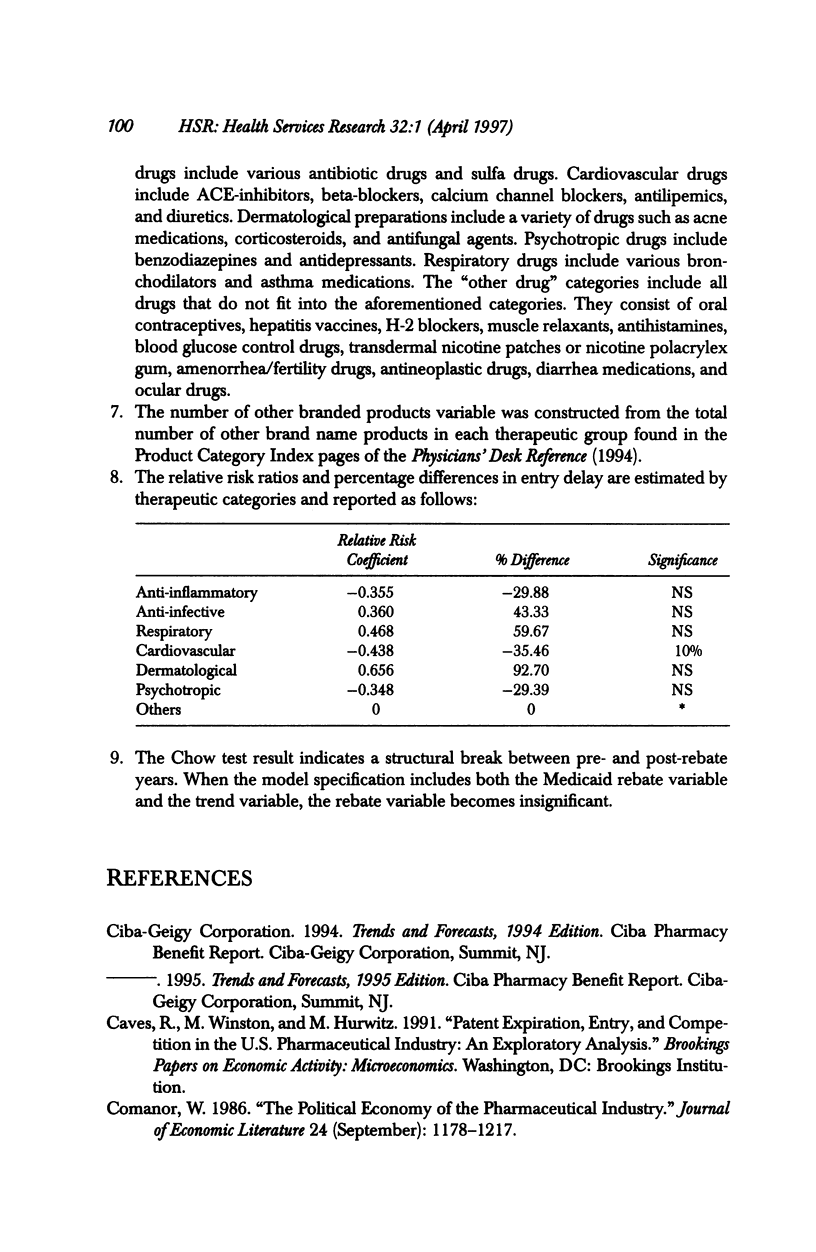
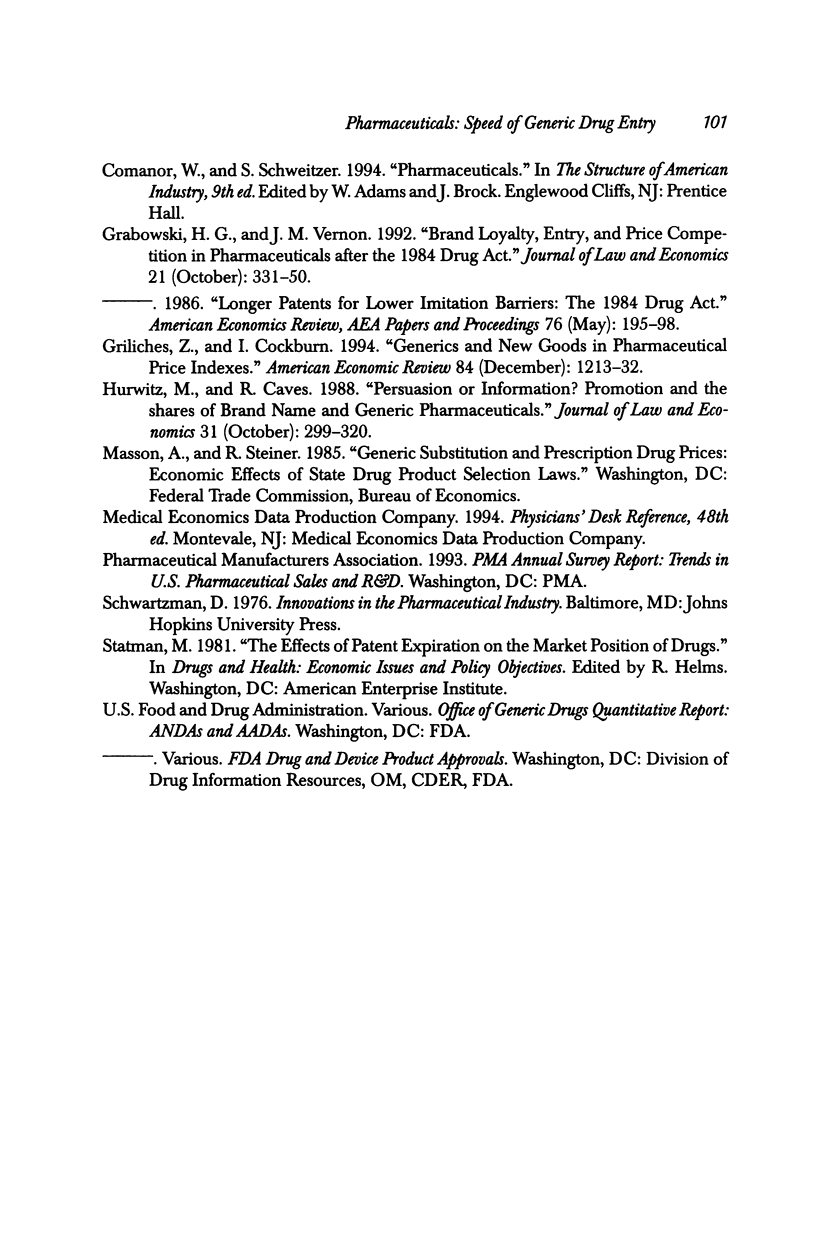
Selected References
These references are in PubMed. This may not be the complete list of references from this article.
- Comanor W. S. The political economy of the pharmaceutical industry. J Econ Lit. 1986;24(3):1178–1217. [PubMed] [Google Scholar]


